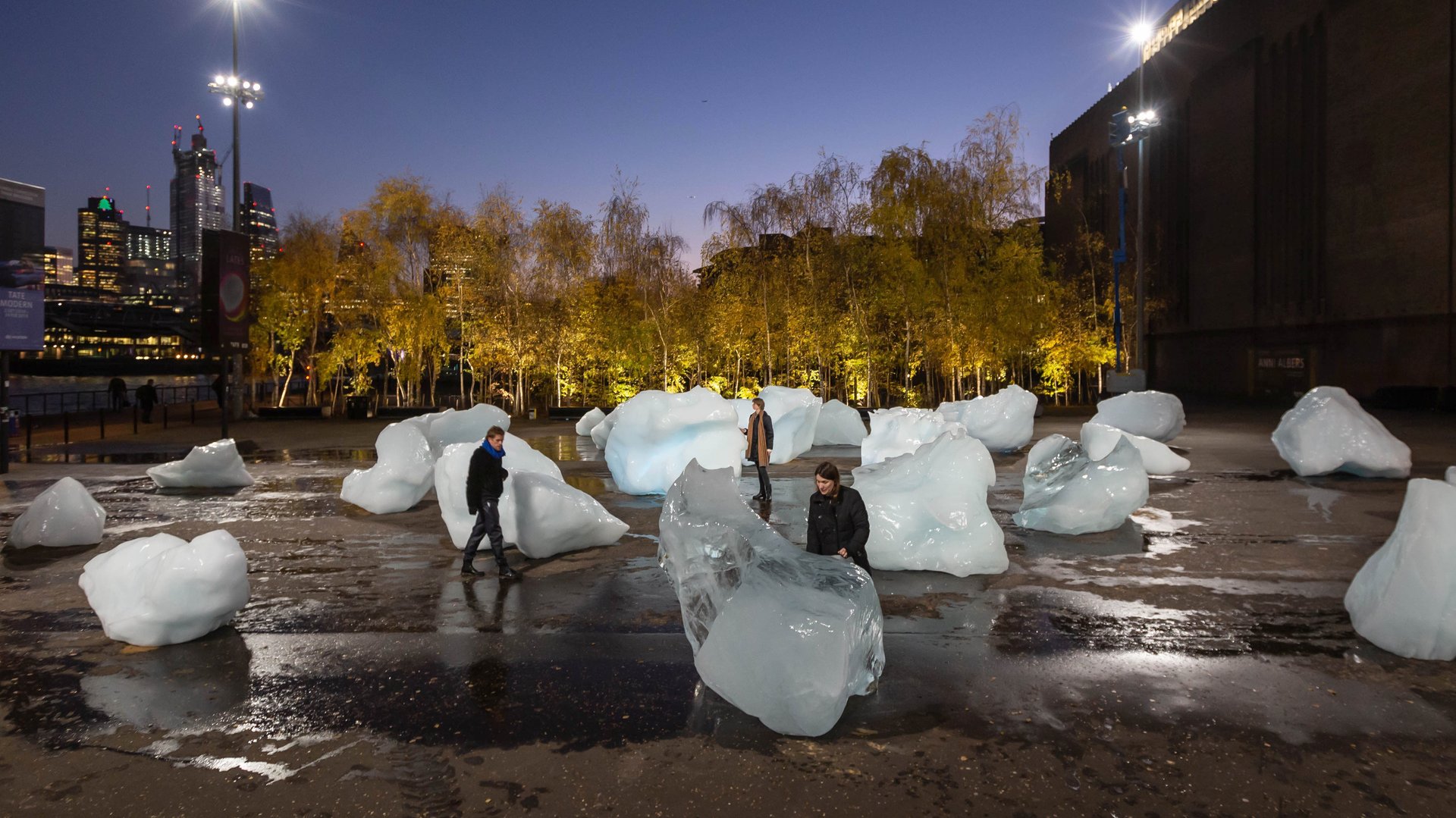An artist has brought the melting ice caps to London’s doorstep
There they are. Massive heaps of glinting ice, looking very out-of-place along the banks of the Thames River in London.


There they are. Massive heaps of glinting ice, looking very out-of-place along the banks of the Thames River in London.
It’s art. It’s didactic. And it’s been shipped into the UK from the Nuup Kangerlua fjord off the coast of Greenland.
It’s also melting. That’s the point artist Olafur Eliasson is trying to make, as passersby slow down to examine and touch the popular public art installation, titled “Ice Watch.” Eliasson, whose work has previously tackled the subject of climate change, installed the same exhibition in Copenhagen in 2014 and in Paris in 2015, to coincide with international climate talks. The current exhibition in London coincides with the two week-long COP24 summit in Poland, which ends Friday, and where policymakers and scientists are trying to devise the urgent measures needed to combat the effects of climate change.
Eliasson worked with Danish geologist Minik Rosing to transport the ice from Greenland to England, where the massive chunks sit outside the Tate Modern and Bloomberg’s European headquarters in central London. Rosing said that the piece is a call to people to embrace the scientific evidence behind climate change and to take action.
“These icebergs didn’t only come here to be beautiful, they’re all carrying a story,” Rosing said at a press conference. “You’ll notice they’re all individuals, they are like beings…it brings us a message of tremendous change that is happening right now.”
Eliasson has also created an accompanying website for the temporary exhibit, which allows people to see real-time data on the ice chunks’ mass and rate of melting as they sit on the London sidewalks.
The ice blocks were harvested from free-floating icebergs which had already detached from the ice sheet and were melting into the ocean. Before being transported from Greenland to the UK, Eliasson and Rosing measured how much of a carbon footprint it would make to move each of the 30 blocks of ice. Individually, the footprint is equivalent to one person traveling to Greenland from London.
Eliasson hasn’t only focused on climate change. In 2012, together with entrepreneur Frederik Ottesen, he cofounded “Little Sun,” which makes a variety of portable solar products designed for people living without any access to energy supplies. What began as a solar-inspired work of art and Tate exhibition has grown into a network of more than 661,000 “little suns” across several African countries.
Eliasson is one of a number of artists making climate change-related art. Others have captured the sounds of the Arctic, played with the idea of eating cell-cultured human meat, and created giant Bromeliad plant sculptures, to express how plants are forced to integrate themselves into the environments that humans create.